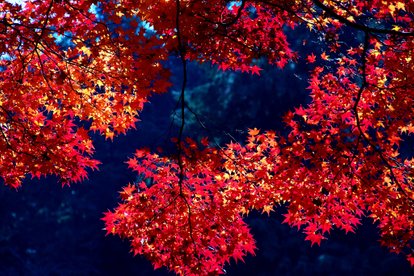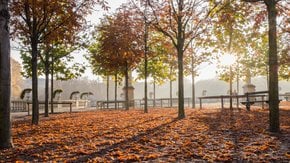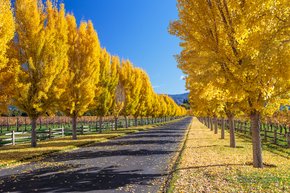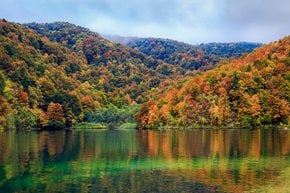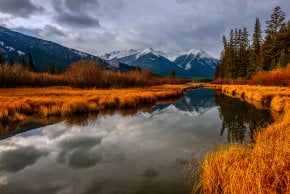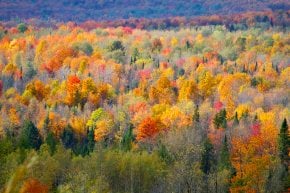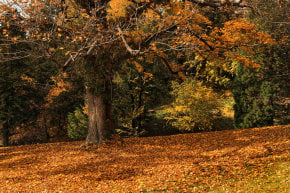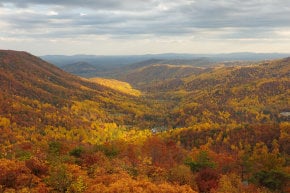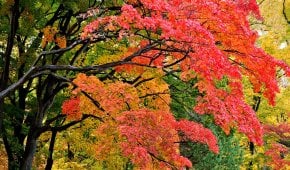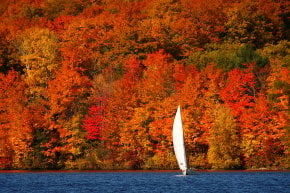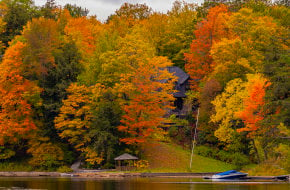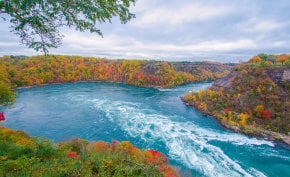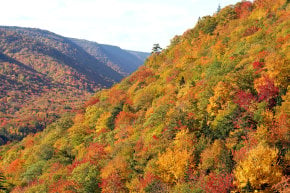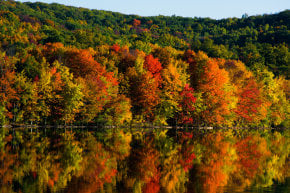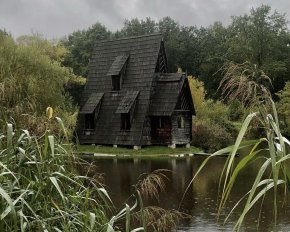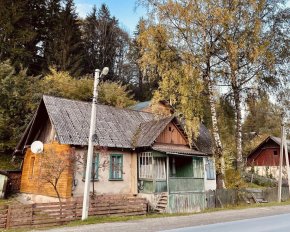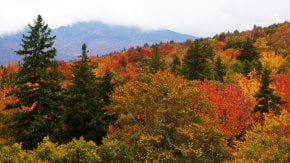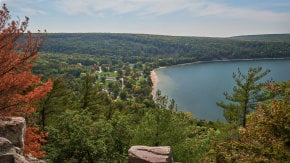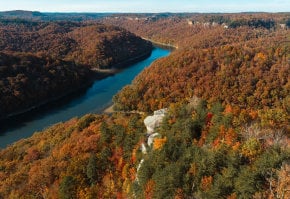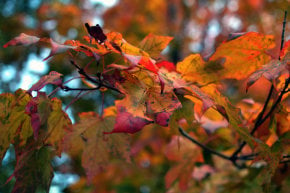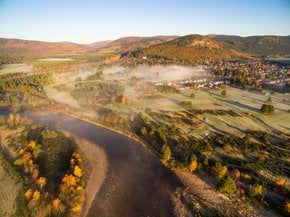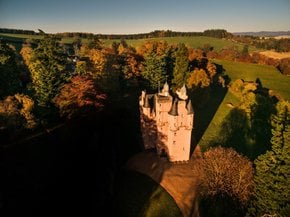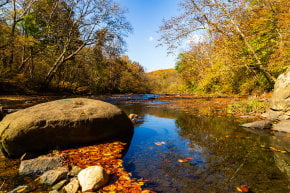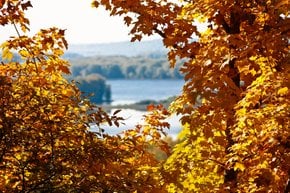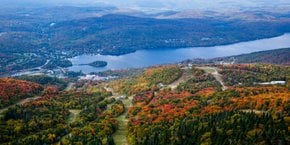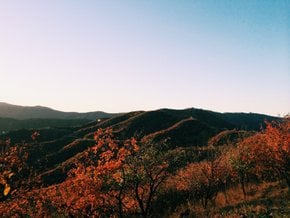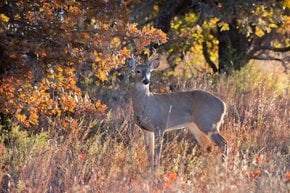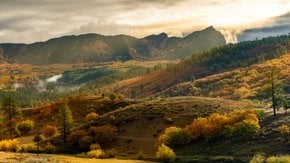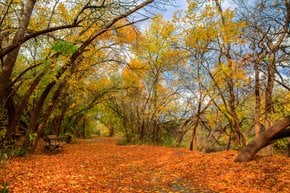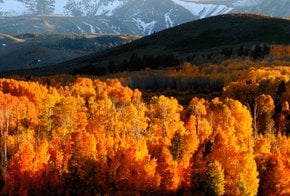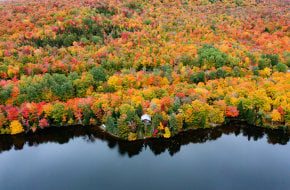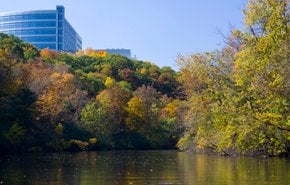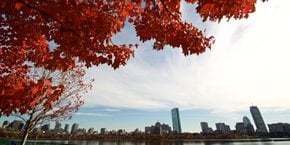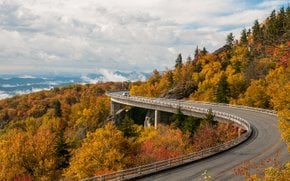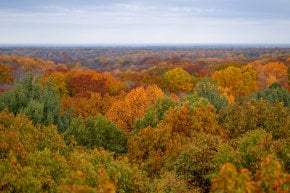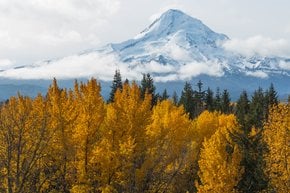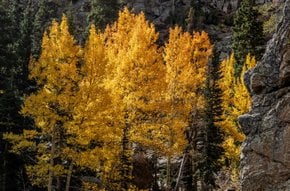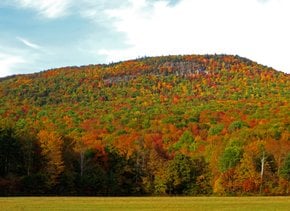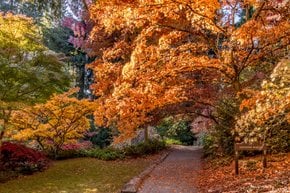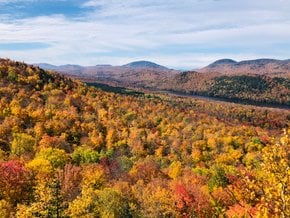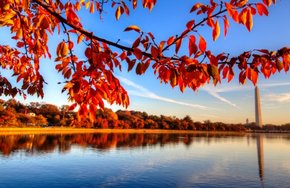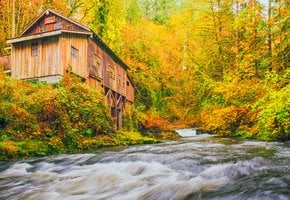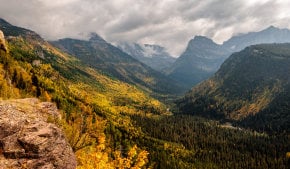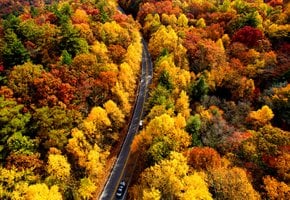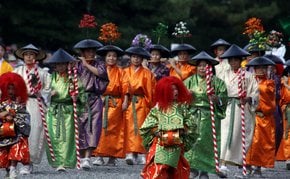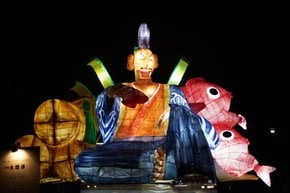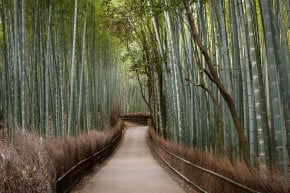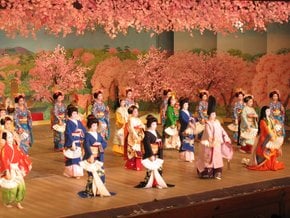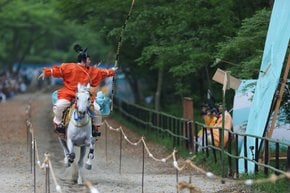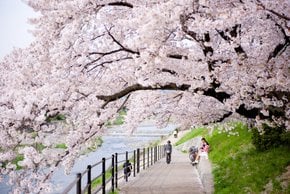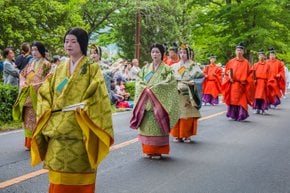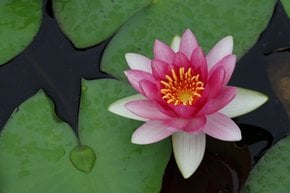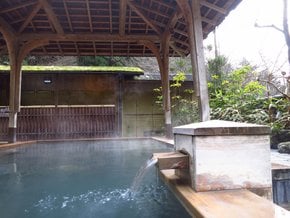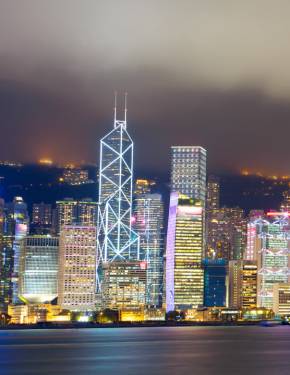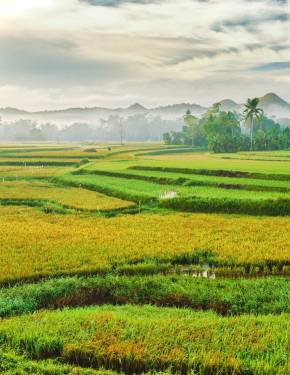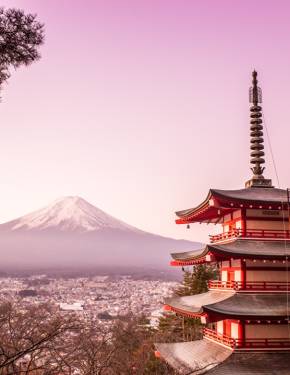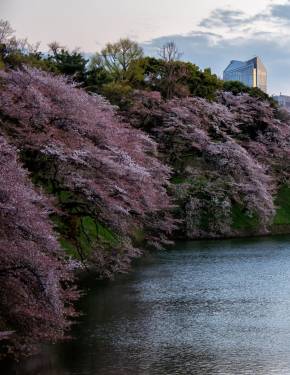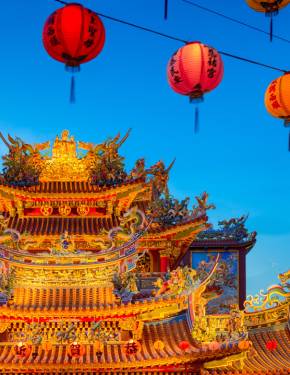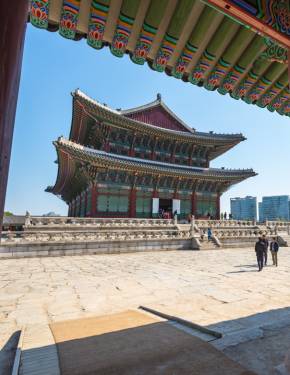Autumn Foliage (Kōyō) in Kyoto 2025
This is a magical time when all parks, temples, shrines and gardens explode into red and orange hues
Best time: mid-October–mid-December
Kyoto, one of the oldest cities in Japan, becomes particularly enchanting during the autumn season. The seasonal spectacle of red, orange, and yellow hues, known as kōyō, attracts visitors from all over the world. They come to witness the stunning fall foliage that blankets Kyoto's temples, gardens, and parks. The autumn foliage in Kyoto offers a mesmerizing blend of natural beauty and historical charm, making it a must-see destination for nature enthusiasts and history buffs alike.
Peak Viewing Time
Typically, the best time to view the fall colors in Kyoto is in the last week of November. The vibrant foliage begins to appear in mid-November and reaches its peak towards the end of the month. For the most accurate predictions, websites like Kishou provide forecasts for the best autumn color viewing times in Kyoto. To avoid crowds, visit popular spots early in the morning or late in the afternoon. Additionally, many temples, such as Eikando, offer nighttime illuminations during the peak koyo season.
Prime Viewing Spots
Kyoto Imperial Palace Park
Kyoto Imperial Palace Park is a serene and scenic spot for kōyō viewing, featuring beautiful maple and ginkgo trees. Early mornings offer a peaceful experience as locals commute through the park. Entrance is free, making it an accessible destination. At the park's center is the Kyoto Imperial Palace, or Gosho, the former residence of Japan's imperial family until 1868. The current structure, built in 1855, incorporates architectural styles from various periods in Kyoto's history. Also within the park is the Kyoto Sento Imperial Palace, which includes the Kyoto Omiya Palace, where the royal family stays during visits. The park is easily accessible by subway via the Karasuma Line from Kyoto Station to Marutamachi or Imadegawa stations.
Enkou-ji Temple
Enkou-ji Temple, established in 1861, is renowned for its picturesque autumn leaves combined with modest temple architecture. Visitors are required to make an advanced reservation and pay an admission fee of 1,000 yen during the autumn season. The temple grounds, especially the upper areas accessible by stairs, provide a more intimate foliage viewing experience.
Anrakuji Temple
Anrakuji Temple, located near Philosopher’s Path, is a hidden gem for autumn foliage viewing. It features a charming thatched-roof entrance gate and is usually less crowded. The temple charges an entrance fee of 500 yen and is open from 10 am to 4 pm on weekends during the kōyō season.
Eikan-do Temple
Eikan-do Temple is one of Kyoto's most popular autumn color viewing spots, offering both day and night experiences. The temple grounds, including the picturesque Hojo Pond and Tahoto Pagoda, are illuminated in the evenings during the autumn season. The entrance fee during this period is 1,000 yen, and the temple is open from 9 am to 5 pm.
Suirokaku Water Bridge
The Suirokaku Water Bridge, near Nanzenji Temple, is an architectural wonder built in 1890. Its Roman-style design amidst the autumn foliage creates a stunning backdrop for photos. The site is open year-round and free to visit.
Kodai-ji Temple
One of the best spots to enjoy the autumn foliage is Kodai-ji Temple, a Rinzai Buddhist temple built in 1606. This historical site features numerous walking trails lined with vibrant trees. For a 600 yen entrance fee, visitors can take a serene stroll through the beautifully landscaped grounds, experiencing the harmonious blend of natural beauty and historical architecture.
Arashiyama
Arashiyama, a picturesque district in western Kyoto, is famous for its maple tree gardens and the "Saga Scenic Railway." The area, located about 30 minutes from central Kyoto, is famous for the Arashiyama Bamboo Grove, where visitors can immerse themselves in a serene, otherworldly environment among towering bamboo stalks. Key attractions include the iconic Togetsukyo Bridge, the expansive Tenryu-ji Temple with its stunning gardens, and the scenic Sagano Romantic Train, which offers a relaxing 620 yen ride along the Hozu River. Despite its popularity, Arashiyama’s northern area, known as Sagano, provides a quieter experience with beautiful temples and charming rural landscapes.
Kiyomizu-dera
Kiyomizu-dera, a UNESCO World Heritage site, boasts over 1,000 trees and stunning waterfalls. The temple's main hall features a veranda with breathtaking views of the city, making it a prime spot for autumn leaf viewing.
Tofuku-ji Temple
Tofuku-ji Temple, one of Kyoto’s largest and oldest temples, is known for its Sanmon gate (the most important gate of a Japanese Zen Buddhist temple) and beautiful gardens filled with colorful maple trees. Don't forget to explore the Tsutenkyo Bridge and Honbo Garden while visiting.
Takao
Takao, a serene mountain valley located about an hour north of Kyoto, is celebrated for its historic temples and stunning natural scenery, particularly during the autumn foliage season. The area includes the picturesque Kozanji Temple, known for its ancient Manga drawings and tea ceremony history; Jingoji Temple, renowned for its scenic views and steep climb; and Saimyoji Temple, famous for its historical significance and expansive maple tree garden. Popular hiking trails, such as the route from Takao to Arashiyama and the Mount Atago Round Trail, offer breathtaking views of the Kansai region. Takao is accessible by JR Bus and Kyoto City Bus.
Tickets and Parking
During the autumn season, most temples in Kyoto charge an entrance fee ranging from 500 yen to 1,000 yen. However, some sights, such as Kyoto Imperial Palace Park, remain free of charge, offering beautiful kōyō viewing without any cost. While parking is available near major attractions, it can be challenging due to limited space and high demand. Therefore, using public transportation is highly recommended.
Location and Infrastructure
Kyoto is easily accessible from major Japanese cities, such as Tokyo, Nagoya, Osaka, and others, with Kyoto Station serving as the main hub. From there, local buses and trains connect visitors to key attractions. For instance, the Saga Scenic Railway is a short walk from Saga-Arashiyama Station, and Tofuku-ji Temple is accessible from Tofukuji Station. Enkou-ji Temple is an 8-minute walk from Ichijoji Station, and Eikan-do Temple is a 5-minute walk from Nanzenji-Eikando-michi bus stop or a 10-minute walk from Keage Station. The city’s efficient bus and train network makes it easy to explore multiple locations in a day.
Historical Background
The tradition of kōyō, or autumn leaf viewing, has deep roots in Japanese culture, dating back centuries. The activity, also known as momijigari (red leaf hunting), has been celebrated in poetry and art. In Kyoto, the practice is intertwined with the city’s numerous historical temples and shrines. Temples like Enkou-ji and Eikan-do have been significant sites for centuries, offering not only spiritual solace but also a connection to the natural beauty of the changing seasons.

